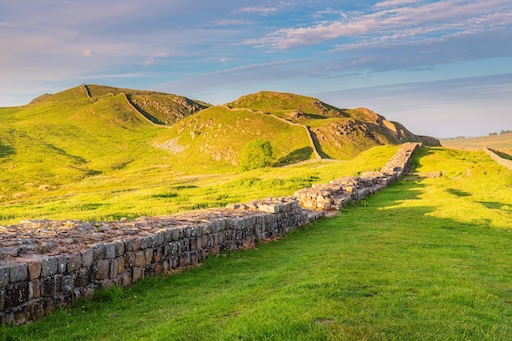
Imagine walking through the rolling hills of Northern England when suddenly—there it is. A stone wall, winding like a spine across the landscape. Silent. Crumbling. Ancient. This is Hadrian’s Wall, once the northernmost frontier of the mighty Roman Empire. Built almost 2,000 years ago, it now stands as one of Britain’s most haunting and awe-inspiring historical sites.
More than just a line in the dirt, Hadrian’s Wall was a symbol of ambition, fear, and power. It stretched across the entire width of Britain—roughly 117 kilometers (73 miles)—and marked the edge of the known world for Rome. To the north were the mysterious “barbarians”; to the south, Roman Britannia.
A Wall Worthy of an Emperor
The wall was commissioned by Emperor Hadrian around AD 122. His message was clear: “This far, and no further.” It wasn’t just for defense—it was a political statement, a show of might, and a way to control movement, trade, and taxation.
The wall itself was no casual pile of rocks. Parts of it were up to 6 meters high and nearly 3 meters thick, built with stone and turf depending on the terrain. Forts, milecastles, watchtowers, and ditches lined the route, manned by Roman soldiers who likely found the northern weather... less than Mediterranean.
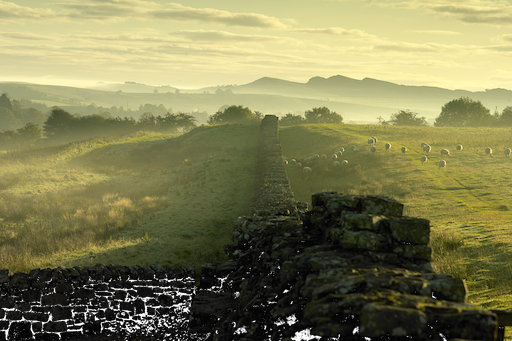
Walking Through History
Today, much of the wall is in ruins, reclaimed by sheep, wind, and time. But that’s part of the magic. You can still hike long stretches of it—particularly in Northumberland National Park, where the landscape remains wild and rugged.
The Hadrian’s Wall Path is a National Trail that takes you coast-to-coast, from Wallsend in the east to Bowness-on-Solway in the west. Along the way, you’ll find Roman forts like Housesteads, Vindolanda, and Chesters, each offering a window into what life was like on the fringe of empire.
Vindolanda – Life Behind the Stones
Just south of the wall lies Vindolanda, one of the most fascinating archaeological sites in Europe. Here, researchers have uncovered thousands of Roman artifacts, including shoes, combs, and even handwritten letters—some of the oldest surviving in Britain.
These aren’t just museum pieces. They’re fragments of daily life: a birthday party invitation, a shopping list, a soldier’s complaint about cold weather. Standing amid the ruins, you can almost hear the chatter of soldiers, the clang of blacksmiths, the gossip of merchants.
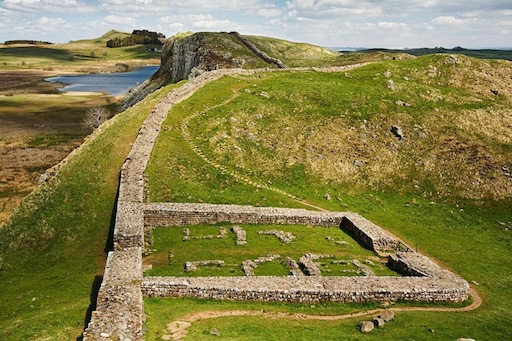
Not Just for History Buffs
Even if you’re not into Roman history, Hadrian’s Wall offers something irresistible: atmosphere. The views from the ridges near Steel Rigg and Crag Lough are cinematic. The skies shift fast. The air feels ancient. It’s the kind of place where you half-expect to stumble into a time slip—or at least a good BBC historical drama being filmed nearby.
In summer, the trails come alive with wildflowers. In winter, fog clings to the stones. No matter the season, the wall makes you feel small in the best possible way.
Tips for Visiting
🥾 Wear proper hiking shoes—many trails are uneven and weather can shift quickly.
🚌 Take advantage of the AD122 bus route that connects key spots along the wall.
🕰️ Plan at least two days to explore major sites like Housesteads and Vindolanda.
🎟️ Some forts charge admission, but the wall itself is free to wander.
📸 Bring a wide-angle lens—you’ll want to capture those sweeping landscapes.
Final Thought
Hadrian’s Wall isn’t just a relic—it’s a reminder. Of how far empires reach, and how eventually, nature and time reclaim everything. But in its stones, forts, and windswept paths, there’s still a pulse. A story. A call to wonder what it must have felt like to stand guard at the edge of the known world.
It’s not just a wall—it’s a 2,000-year-old whisper carried on the northern wind.
Share this story and inspire others.
Tags: Hadrian’s Wall, Roman Empire UK, Northern England travel, historical ruins Britain, Roman frontier, Chasing Hidden Wonder
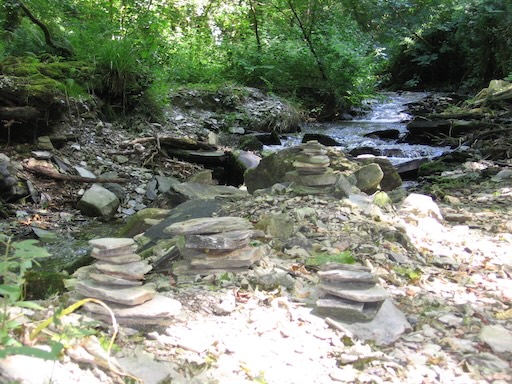 St. Nectan’s Glen – A Hidden Waterfall Steeped in Celtic Legend
St. Nectan’s Glen – A Hidden Waterfall Steeped in Celtic Legend
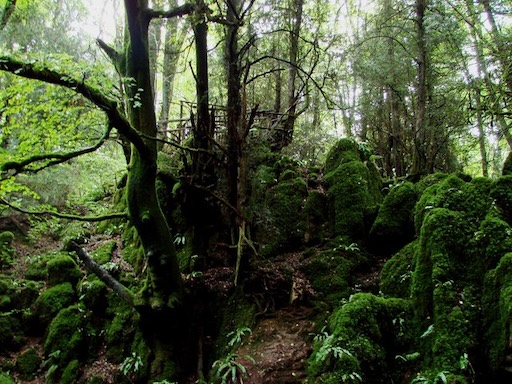 Puzzlewood – A Real-Life Fantasy Forest in Gloucestershire
Puzzlewood – A Real-Life Fantasy Forest in Gloucestershire
 Tower of London – The Fortress That Guards History
Tower of London – The Fortress That Guards History
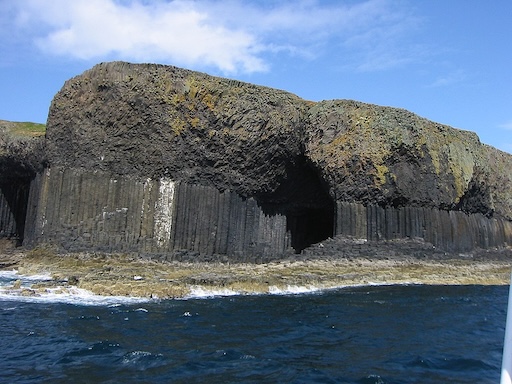 Fingal’s Cave – Scotland’s Singing Sea Cathedral of Stone
Fingal’s Cave – Scotland’s Singing Sea Cathedral of Stone
 The British Museum – Where the World’s Treasures Come to Stay
The British Museum – Where the World’s Treasures Come to Stay
 Alnwick Castle – Where Magic Meets Medieval Might
Alnwick Castle – Where Magic Meets Medieval Might
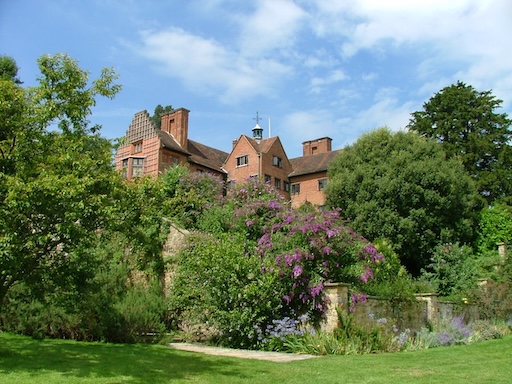 Chartwell House – Where Churchill’s Spirit Still Walks the Halls
Chartwell House – Where Churchill’s Spirit Still Walks the Halls